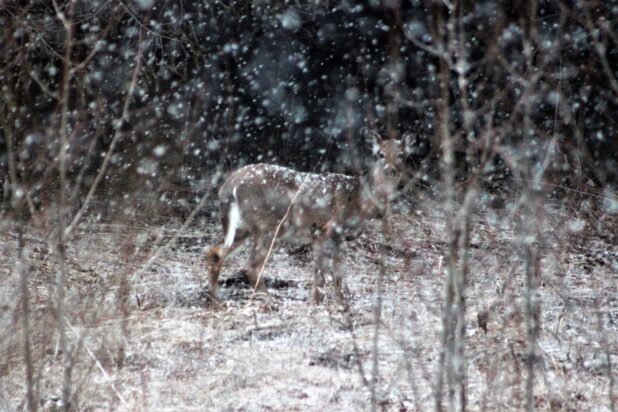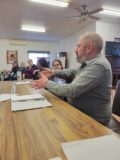Commentary
Paving over our potential
March 29, 2023

By Nate Smelle
Every season brings with it a newfound awareness of the changes underway within our environment. Of course there is some degree of predictability one can employ when analyzing these seasonal fluctuations of our place and time; however, as we all know, these expectations are at best nothing more than a rough set of guidelines to help us prepare for the future.
For example, “April showers bring May flowers.” But, the type of flowers, along with exactly where and when they bloom is determined by a wider variety of interactions within the web of interdependence in which we exist. If a windstorm uproots a massive sugar maple that provides shade, nutrients, and shelter to the flora and fauna in its realm, then the Moose, White-tailed Deer, Snowshoe Hare, Squirrels, Porcupine, birds, and insects that once found nourishment and security amid its canopy and the forest floor below will have to seek out a new source of sustenance.
Having learned from our collective experience over the past 4.54-billion years, life on Earth has evolved by adapting to such relatively minor disruptions. Thanks to the perfection of nature’s design, the upturned rootball and rotting tree will therefore not go to waste. Over time it will provide a new kind of nourishment and form of shelter for other species of plants and animals better suited to the new conditions its transformation has inspired. That is of course if it is left to decompose and reincarnate in the place where it once flourished. If such a tree were removed from its location to be used for another purpose, or left to rot in a landfill, the forest ecosystem from which it initially sprouted would need to adapt to fill the empty space where it once stood.
Although the removal of a tree here and there fundamentally alters an ecosystem, the efficiency of the natural world and its ability to heal allows us to sustainably harvest trees for construction, as a heat source, newspapers, etc. Despite nature’s miraculous mastery of rejuvenation, it cannot keep pace with our rate of resource extraction. This is why it is essential for us to understand our place in the natural world, so that we may act as responsible stewards.
As American philosopher, naturalist, ecologist, forester, conservationist, and environmentalist Aldo Leopold wrote in A Sand County Almanac, “Conservation is a state of harmony between men and land. By land is meant all the things on, over, or in the Earth. Harmony with land is like harmony with a friend; you cannot cherish his right hand and chop off his left. That is to say, you cannot love game and hate predators; you cannot conserve the waters and waste of the ranges; you cannot build the forest and mine the farm. The land is one organism.”
By passing Bill-23 and allowing their high donor developer friends to purchase, pave over, and profit off of the destruction of Provincially Significant Wetlands and other previously protected ecosystems in the Greenbelt, the Ford government is ignoring this basic law of ecology that feeds and sustains all life on Earth.
And for what, a few dollars more?
In stripping away the already minimal environmental protections in Ontario, the Ford government has shown us that it values the bottom line of a small group of developers more than the clean air, water, and soil that these green spaces produce every moment they exist. At the start of the pandemic the Premier surprised many, including myself, when he encouraged Ontarians to take up birdwatching. Well, without the wildlife corridors formerly protected areas such as the Greenbelt provide, there will little opportunity for any wildlife to exist let alone thrive.
Removing one sugar maple tree from a forest will disrupt the balance of an ecosystem over the short-term; but in the long run the change is manageable. Using Bill-23 to destroy entire ecosystems that are already proven to be ecologically sensitive hubs of biodiversity, will do nothing but make a few greedy developers rich at the expense of the health of future generations.


















